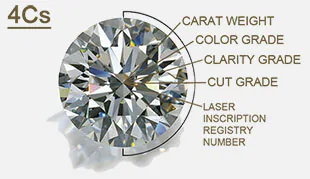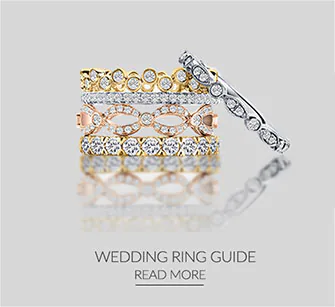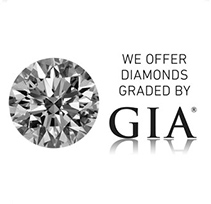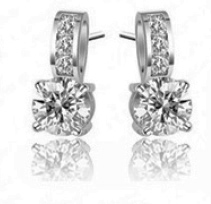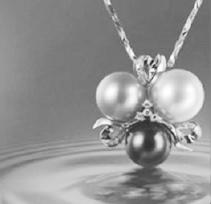RINGS
EDUCATION
Thousands of couples around the world have trusted us with their most important moments. With the largest selection of diamonds and meticulously designed, handcrafted rings, were here to help you find your way to the perfect ring.
DIAMOND
EDUCATION
For most people, buying a diamond is a new experience, but that doesn't mean it should be overwhelming. Understanding a diamond's quality characteristics is straightforward and simple.
Our diamond education is designed to answer all your questions. In just a few minutes you'll know everything you need to know to find your perfect diamond.
JEWELLERY
EDUCATION
it is our mission to take the mystery out of your purchase by offering only the finest quality fine jewellery available, along with expert guidance and education. Our jewellery is crafted with superior materials and inspected against exceptional quality standards.
PEARL
EDUCATION
Use this guide to find the pearl that is right for you by educating yourself on the quality and value of the cultured pearls that we offer.
GEMSTONE
EDUCATION
Gemstones and rare minerals can evoke strong emotions and spur intrigue. While most loose gemstones and minerals are purchased for ornamental jewellery purposes, others are possessed for their fascinating attributes. Natural gemstones and minerals add sparkle to our lives and invigorate our soul with the earth's natural beauty.
DIAMOND CROWN
Chapter 7 -
A diamond's crown encompasses everything that sits above the girdle. This includes the table (the largest facet), the star facets, bezel facets, and upper girdle facets. The crown's proportions and angles influence the overall brilliance of a diamond. When set in an engagement ring, refracted light passes through the crown, and is then reflected back from the pavilion into the observer's eyes. The various facets will disperse the light in different directions, resulting in a colorful fire that is stunning to behold.
Diamond Education
Chapters
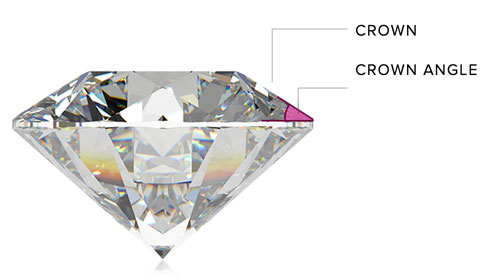
A typical round brilliant diamond has 33 facets on the crown and, if well proportioned, these will be uniform and aligned for maximum sparkle. Because these proportions are considered when the diamond's cut grade is being assessed, an Ideal or Very Good cut grade is enough of an indicator to be sure that a diamond's crown is shaped well.
Fancy diamond shapes all have slightly different styles of crown. In an emerald or asscher-cut diamond, for example, the crown is cut with much fewer facets than a round or other brilliant patterned stone. This typically results in less dispersion, but the cuts are prized for their emphasis on clarity and geometrical symmetry.
The quality of a diamond's crown is not recorded on a grading report by itself. The GIA and AGSL list the crown angle and crown height, which are factored into its overall cut grade. Most round diamonds will have a crown angle of between 30 and 35 degrees. The crown angle for a round Ideal cut diamond must be between 33.7 and 35.8 degrees. Shallower diamonds will create a flat effect that loses fire.










